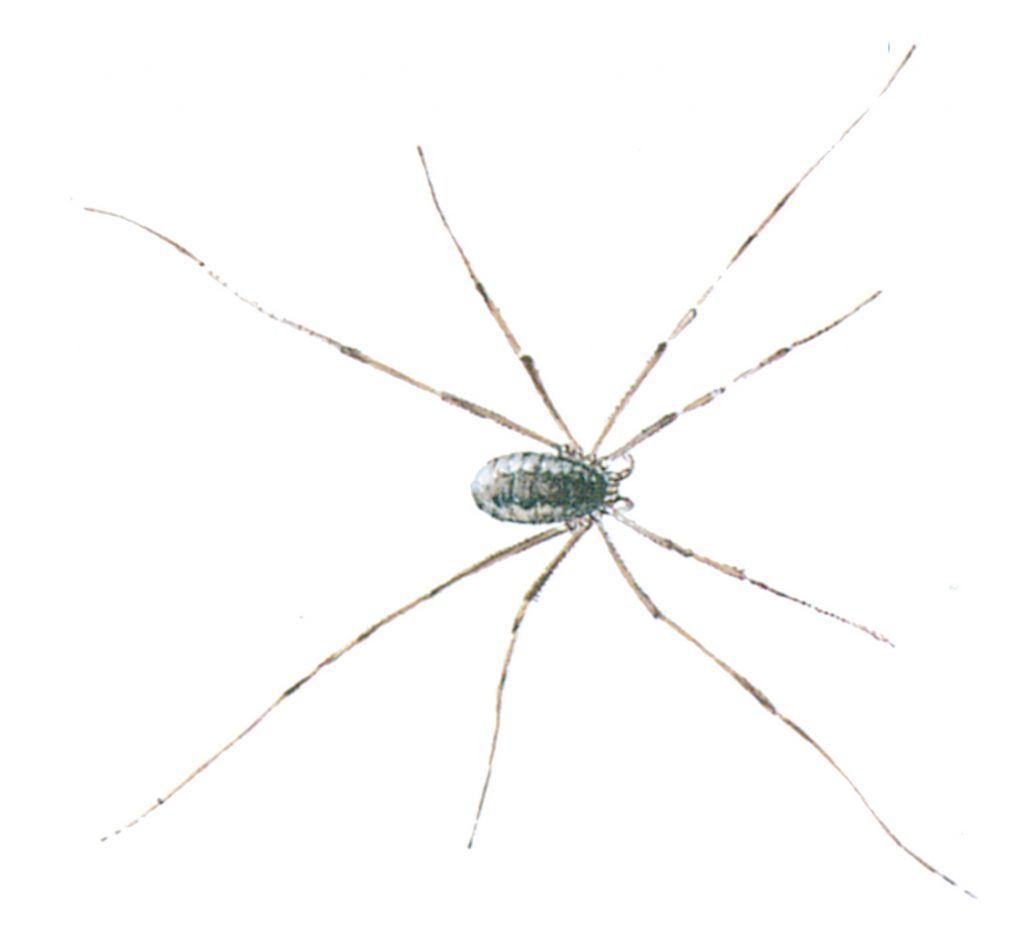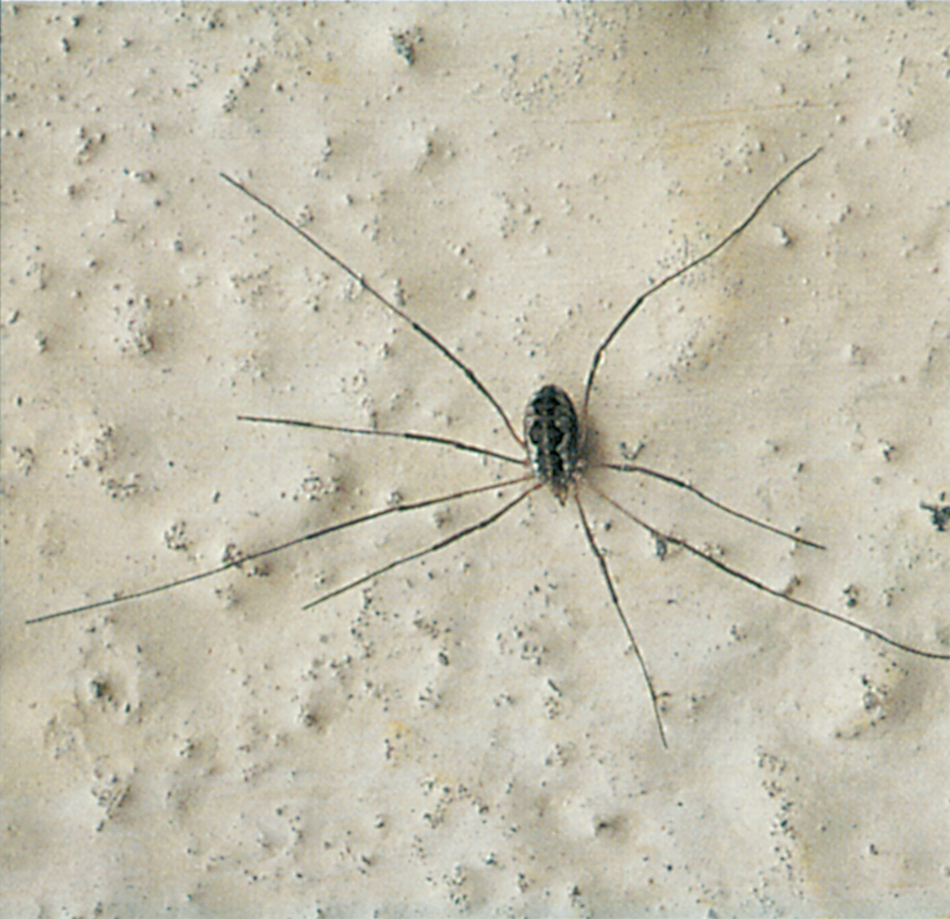(Latin: Order Opiliones)

Harvestmen or phalangids are very easy to recognize by their small, circular body and enormously long legs. Two species, Opilio parietinus and Phalangium opilio, are very common in and around buildings, where they are active at night, searching for food.
Harvestmen live on many different kinds of food. They have been seen, for instance, to gnaw toadstools and pieces of cake, but they feed mainly on carrion and on any invertebrates they are able to overpower.
The method of hunting prey is rather like a game of blind man’s buff. They move around their hunting area quite rapidly and find their prey by almost stumbling over it. The prey is seized with the tip of one of the supple, jointed legs and quickly transferred to the mouth where it is torn to pieces and thoroughly chewed.

Naturally, harvestmen themselves also run the risk of being hunted, and if they cannot hide or run away will sometimes cast off a leg which remains, twitching on the ground long enough to distract the predator, while the harvestman runs off on its remaining legs.
This is comparable with the tail-shedding of certain lizards, and it must happen quite frequently as many harvestmen are seen with fewer than eight legs.
Harvestmen have another method of defence, namely the production of a smelling secretion from glands on the front legs. Even man, with his poor sense of smell, can detect this.




